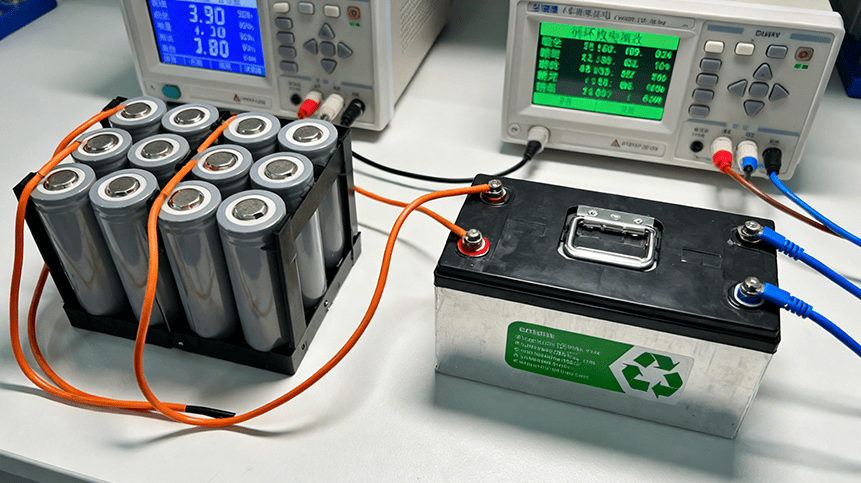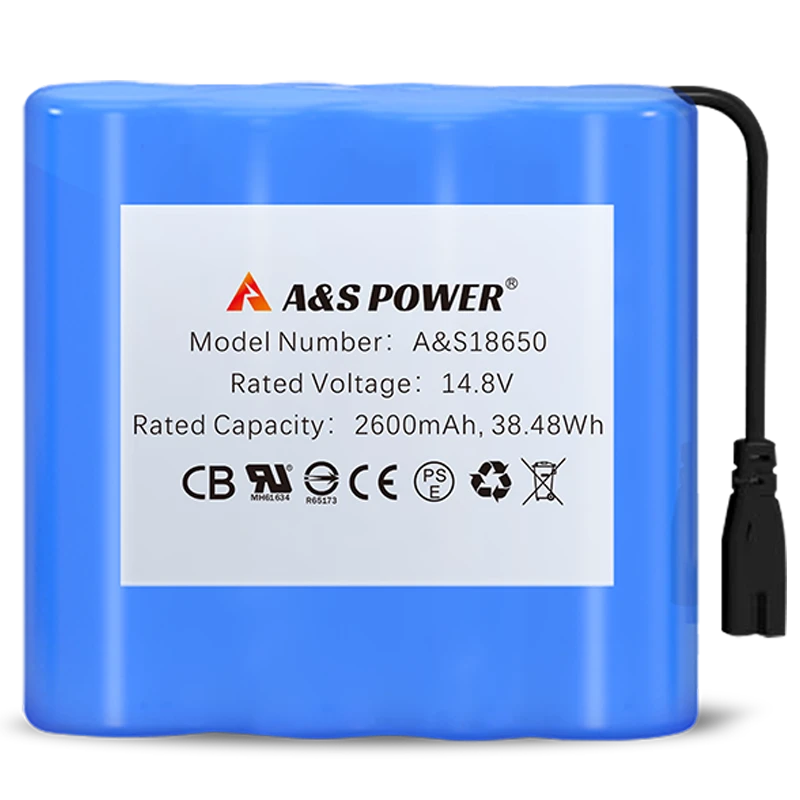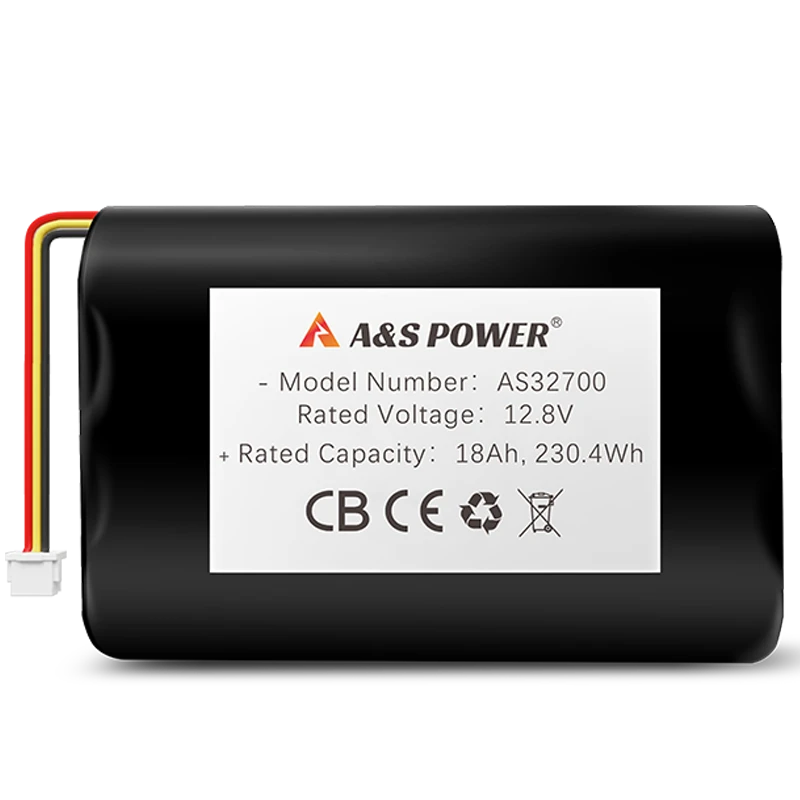What is the relationship between lithium battery voltage and electric quantity?
What is the relationship between lithium battery voltage and electric quantity?
Introduction to Lithium Battery Voltage and Capacity
The intricate and multifaceted relationship between lithium battery voltage and electric quantity, often referred to as state of charge (SOC), constitutes a foundational pillar in the realm of electrochemistry and energy storage technology, particularly for global wholesalers and manufacturers operating within the international marketplace. A comprehensive and nuanced understanding of this dynamic correlation is absolutely paramount for optimizing battery performance, enhancing longevity, ensuring safety across diverse applications ranging from electric vehicles to renewable energy storage systems, and ultimately making informed procurement decisions. Voltage, measured in volts (V), represents the electrical potential difference between the positive and negative terminals of a battery, serving as a critical indicator of the battery's current energy state, while electric quantity, typically quantified in ampere-hours (Ah) or milliampere-hours (mAh), reflects the total amount of charge stored within the battery, essentially defining its capacity to deliver current over a specific duration. The interplay between these two parameters is not linear but is influenced by a host of factors including but not limited to battery chemistry (such as Lithium Iron Phosphate (LFP) or Lithium Nickel Manganese Cobalt Oxide (NMC)), temperature fluctuations, discharge rates, age of the cell, and historical usage patterns, all of which must be meticulously considered when designing battery management systems (BMS) or evaluating products for wholesale distribution. For international businesses, mastering this relationship translates into improved product specifications, more accurate marketing claims, enhanced customer support capabilities, and a stronger competitive edge in a rapidly evolving global market where precision and reliability are highly valued by clients.
To truly appreciate the depth of this relationship, one must delve into the fundamental electrochemical processes occurring within a lithium-ion cell during both charge and discharge cycles, processes that are governed by the movement of lithium ions between the anode and cathode through an electrolyte medium, a journey that directly manifests as changes in terminal voltage. When the battery is fully charged, the voltage reaches its maximum, indicating a high concentration of lithium ions embedded within the anode material, whereas during discharge, as these ions migrate back to the cathode, the voltage gradually decreases, providing a measurable proxy for the diminishing state of charge, although this decrease is not perfectly uniform across the entire discharge curve due to the inherent properties of the electrode materials. This voltage-SOC curve, often characterized by a relatively flat plateau in the mid-range for certain chemistries like LFP, or a more sloping profile for others like NMC, is a critical fingerprint that battery management systems rely upon to estimate remaining capacity, protect the cell from harmful operating conditions such as over-discharge or overcharge, and balance cells within a pack to ensure uniform performance and longevity. For wholesalers, providing detailed and accurate voltage-SOC profiles for their products enables their clients, who may be OEMs or system integrators, to design more efficient and reliable end-products, thereby fostering trust and long-term business relationships across different regions and industries.
Furthermore, the global marketplace for lithium batteries demands a sophisticated understanding of how environmental factors, such as extreme temperatures or high discharge rates common in automotive applications, can alter the voltage-capacity relationship, leading to potential inaccuracies in SOC estimation if not properly accounted for by advanced battery management algorithms. For instance, at lower temperatures, the internal resistance of the battery increases, causing a more pronounced voltage drop under load which might be misinterpreted as a lower state of charge, while simultaneously reducing the actual available capacity due to slowed electrochemical kinetics, a phenomenon that must be clearly communicated to clients operating in cold climates to manage expectations and prevent application mismatches. Similarly, high discharge rates, often encountered in power tools or electric vehicle acceleration, can cause significant voltage sag due to ohmic losses and polarization effects, making the instantaneous voltage a poor indicator of true remaining capacity unless compensated for by coulomb counting or model-based estimation techniques integrated within the BMS. As a manufacturer or wholesaler, offering batteries with well-characterized performance under these varied conditions, supported by comprehensive data sheets and application notes, becomes a significant value proposition, especially when catering to a diverse international clientele with vastly different operational requirements and environmental challenges.
The Fundamental Principles of Voltage and SOC
The relationship between voltage and state of charge in lithium batteries is fundamentally rooted in the electrochemical potential of the electrode materials, a concept derived from thermodynamics and the Nernst equation, which describes how the equilibrium voltage of a cell changes with the concentration (activity) of the lithium ions in the electrodes, thereby providing a theoretical foundation for understanding the open-circuit voltage (OCV) curve. Open-circuit voltage, defined as the voltage measured when the battery is at rest and no current is flowing, is the most accurate voltage-based indicator of state of charge, as it eliminates the confounding effects of internal resistance and polarization, allowing for a direct correlation with the concentration gradient of lithium between the anode and cathode, a correlation that is unique to each specific chemistry and must be empirically determined through meticulous testing. For example, Lithium Iron Phosphate (LFP) batteries exhibit an exceptionally flat OCV curve throughout the majority of their discharge range, meaning that the voltage changes very little between approximately 20% and 80% SOC, making precise voltage-based SOC estimation particularly challenging without supplementary methods like coulomb counting or impedance tracking, whereas Lithium Cobalt Oxide (LCO) or NMC chemistries show a more pronounced and monotonic slope, facilitating easier voltage-based SOC estimation.
This fundamental principle is crucial for designing accurate battery management systems, which must integrate multiple estimation techniques, including voltage lookup tables, coulomb integration (ampere-hour counting), and sometimes adaptive algorithms like Kalman filters, to provide a reliable SOC reading to the end-user under all operating conditions. The OCV-SOC relationship is also highly dependent on temperature; as temperature decreases, the entire OCV curve shifts downward due to changes in the thermodynamic properties and ionic conductivity of the electrolyte, meaning that at the same SOC, a colder battery will show a lower OCV than a warmer one, a factor that must be calibrated within the BMS to prevent premature low-voltage cutoffs in cold weather applications. Furthermore, this relationship changes as the battery ages due to irreversible side reactions like solid electrolyte interphase (SEI) layer growth, lithium plating, and active material degradation, which alter the stoichiometry and kinetics of the electrodes, leading to a gradual reduction in total capacity and a shift in the OCV curve, necessitating periodic recalibration of the SOC estimation algorithm over the battery's lifespan to maintain accuracy.
For global wholesalers and manufacturers, providing detailed OCV-SOC tables for their specific battery models across a range of temperatures and cycle life stages is an invaluable technical resource for their clients, enabling them to develop more robust and reliable products, particularly for applications where safety and precision are paramount, such as medical devices or aerospace systems. Understanding these fundamental principles also allows businesses to better articulate the performance characteristics and limitations of their products, setting realistic expectations for customers regarding the accuracy of fuel gauges and the effective usable capacity under different environmental stressors, thereby reducing potential disputes and enhancing customer satisfaction in the long term. It underscores the importance of not relying solely on voltage for a quick assessment of remaining energy, especially for chemistries with flat discharge curves, and advocates for a systems-level approach that combines voltage measurement with other parameters to achieve a true understanding of the battery's state.
Factors Influencing the Voltage-SOC Dynamic
While the fundamental OCV-SOC relationship provides a baseline, the actual voltage measured during operation is profoundly influenced by a multitude of dynamic factors that complicate the direct interpretation of electric quantity, factors that must be thoroughly understood by anyone involved in the specification, design, or application of lithium battery systems on a global scale. The most significant of these factors is the load current, which causes an immediate voltage drop due to the battery's internal resistance (ohmic loss) and slower voltage shifts due to polarization effects (activation and concentration overpotentials), meaning that under a high discharge load, the terminal voltage can be significantly lower than the OCV at that same SOC, potentially triggering a low-voltage cutoff even when substantial energy remains in the battery, a phenomenon known as voltage sag. This is particularly critical for high-power applications like electric vehicles or grid frequency regulation, where sudden bursts of current are common, and the BMS must be sophisticated enough to distinguish between a true low-SOC condition and a temporary voltage dip caused by high current demand, often through real-time current measurement and advanced modeling.
Another paramount factor is operating temperature, which affects nearly every aspect of battery behavior, including internal resistance, chemical reaction rates, and diffusion coefficients of lithium ions, all of which conspire to alter the voltage profile for a given SOC. In cold environments, increased internal resistance leads to greater voltage sag under load, reducing the available power and often leading to an underestimation of remaining capacity if the BMS is not temperature-compensated, while also decreasing the total available capacity as the chemical reactions become too slow to utilize all the active material. Conversely, at elevated temperatures, internal resistance decreases, minimizing voltage sag and potentially increasing available capacity, but at the risk of accelerating degradation mechanisms like SEI growth, which can permanently reduce capacity and increase resistance over time, thereby altering the long-term voltage-SOC relationship. For international wholesalers, this means that product specifications must always be contextualized with expected operating temperature ranges, and clients must be educated on the significant performance implications of deploying batteries in environments outside of the standard 20-25°C room temperature condition.
Furthermore, the age and cycle history of the battery introduce long-term drift in the voltage-SOC correlation, as cumulative degradation mechanisms like loss of active lithium inventory (LLI) and loss of active material (LAM) at the electrodes change the fundamental stoichiometry and kinetics of the cell. An older battery will not only have less total capacity but may also exhibit a different OCV curve and certainly a different under-load voltage profile due to increased internal resistance, meaning that a voltage that once corresponded to 50% SOC in a new cell might indicate a significantly different SOC after hundreds of cycles. This aging effect necessitates that advanced BMS implementations incorporate adaptive learning algorithms to update their capacity estimates and voltage-SOC models over time, ensuring that the fuel gauge remains accurate throughout the battery's entire service life, a feature that is increasingly demanded by OEMs in automotive and energy storage sectors. For manufacturers, conducting accelerated aging tests and providing clients with models of how the voltage-SOC relationship evolves over time and under different stress conditions is a value-added service that demonstrates deep technical expertise and commitment to product reliability.
A often overlooked but critical factor is the battery's chemical composition, as different cathode and anode materials yield distinctly different voltage profiles and behavioral characteristics. For instance, as previously mentioned, LFP chemistry has a very flat voltage plateau, making voltage-based SOC estimation difficult, while NMC and LCO have more sloping curves. Newer chemistries like Lithium Titanate Oxide (LTO), which uses a titanate anode, operate at a significantly different nominal voltage (around 2.4V) and have a very different voltage-SOC relationship compared to graphite-anode cells. This fundamental difference means that the strategies for SOC estimation, system design, and customer communication must be tailored specifically to the chemistry being sold, underscoring the importance for wholesalers to have deep technical knowledge of their product portfolio rather than treating all lithium batteries as a homogeneous commodity.
Practical Implications for Estimation and Management
The complex and non-linear interplay between voltage and electric quantity has direct and profound practical implications for the design of battery management systems, the development of accurate fuel gauging algorithms, and the ultimate user experience in any device powered by lithium batteries, implications that global businesses must address to ensure product success and customer satisfaction. The primary challenge lies in achieving accurate State of Charge (SOC) estimation, which is the equivalent of a fuel gauge for an electrochemical system, and while voltage can be a component of this estimation, it is rarely sufficient on its own, especially under dynamic operating conditions or for chemistries with flat voltage profiles, leading to the widespread adoption of Coulomb Counting (ampere-hour integration) as a complementary method. Coulomb counting involves integrating the current flowing into and out of the battery over time to track the net change in charge, but this method is susceptible to errors from current sensor inaccuracies, self-discharge, and coulombic inefficiencies, and it requires periodic recalibration to a known reference point, often provided by the open-circuit voltage when the battery is fully charged or has rested for a significant period.
Therefore, the industry standard for reliable SOC estimation is to use a sensor fusion approach, typically combining voltage measurement, coulomb counting, and often sophisticated model-based algorithms like Kalman Filters, which use a mathematical model of the battery to predict its behavior and correct the SOC estimate based on the difference between the predicted voltage and the measured voltage. The accuracy of these models is entirely dependent on a precise understanding of the voltage-SOC relationship under various temperatures, current rates, and states of health, which is why battery manufacturers invest significant resources in characterizing their cells and providing this data to their BMS partners and large OEM clients. For a wholesaler, facilitating this data exchange by providing comprehensive performance datasheets, OCV-SOC curves at multiple temperatures, and impedance spectroscopy data can be a critical differentiator, enabling their clients to develop more accurate and reliable end-products, which is especially important in competitive markets like electric mobility or consumer electronics.
Beyond fuel gauging, the voltage-SOC relationship is critical for implementing safety protections within the BMS, such as overcharge and over-discharge prevention. The voltage thresholds for these protections are directly tied to the SOC; overcharging (pushing the cell beyond 100% SOC) causes a rapid and dangerous rise in voltage, leading to oxidative breakdown of the cathode material and electrolyte, potentially causing thermal runaway, while over-discharging (drawing the cell below 0% SOC) can cause the copper current collector to dissolve, leading to internal short circuits. The BMS monitors the voltage of each cell in a pack and disconnects the load or charger when these thresholds are approached, but setting these thresholds requires a deep understanding of the specific cell's voltage characteristics at the extreme ends of its SOC range. For example, the precise voltage at which a cell is considered fully charged (e.g., 4.2V for NMC, 3.65V for LFP) must be strictly adhered to, and the BMS must account for the fact that the measured voltage under charge current will be higher than the OCV due to internal resistance.
Finally, understanding this relationship is essential for capacity testing and state of health (SOH) monitoring. The standard method for determining a battery's actual capacity (in Ah) is to perform a full discharge from 100% SOC to 0% SOC at a specified rate while measuring the total charge removed, a process that requires precise knowledge of the voltage endpoints that correspond to 100% and 0% SOC. As a battery ages and its SOH declines, its capacity diminishes, and its internal resistance increases, which manifests as a different voltage profile during discharge—the voltage will sag more under load and reach the cutoff voltage sooner, giving the appearance of reduced capacity. For wholesalers and service providers, offering capacity testing services or providing clear guidelines on how to perform such tests allows their clients to accurately assess the health and remaining useful life of their battery assets, which is crucial for maintenance planning in applications like industrial backup power or telecommunications infrastructure.
-

 May.2025.11.24Ternary Lithium Battery vs Lithium-ion: Complete Comparison Guide (2025 Edition)Learn More
May.2025.11.24Ternary Lithium Battery vs Lithium-ion: Complete Comparison Guide (2025 Edition)Learn More -

 May.2025.11.214S2P 18650 14.8V Battery: Complete Technical Guide, Specs, Applications & SafetyLearn More
May.2025.11.214S2P 18650 14.8V Battery: Complete Technical Guide, Specs, Applications & SafetyLearn More -

 May.2025.11.18PCM vs BMS in Lithium Batteries: What’s the Difference and Which One Do You Need?Learn More
May.2025.11.18PCM vs BMS in Lithium Batteries: What’s the Difference and Which One Do You Need?Learn More -

 May.2025.11.17Custom Li-ion Battery Design for Medical Devices (2025 Comprehensive Guide)Learn More
May.2025.11.17Custom Li-ion Battery Design for Medical Devices (2025 Comprehensive Guide)Learn More -

 May.2025.11.17The Future of Lithium-Ion Batteries: Innovation, Sustainability, and Global Market TrendsLearn More
May.2025.11.17The Future of Lithium-Ion Batteries: Innovation, Sustainability, and Global Market TrendsLearn More















